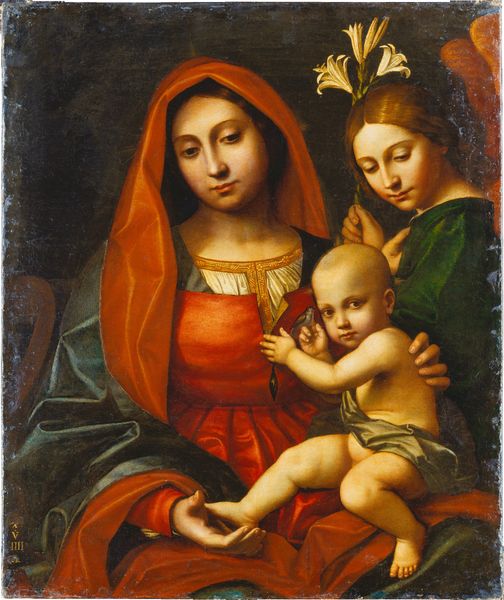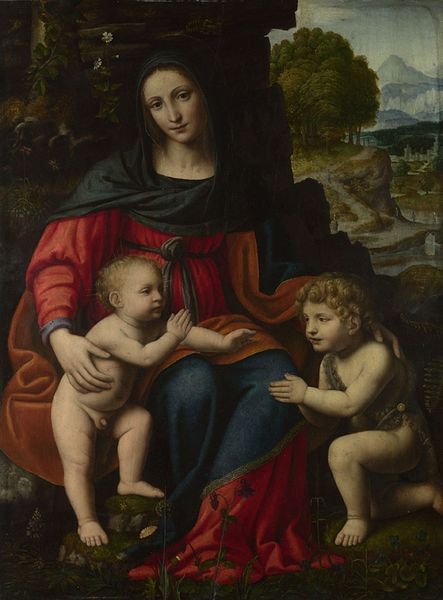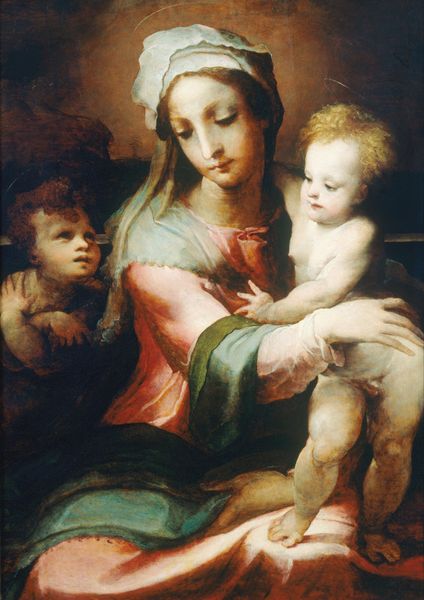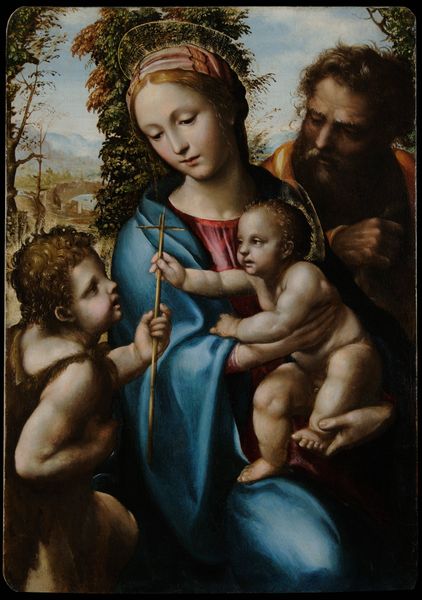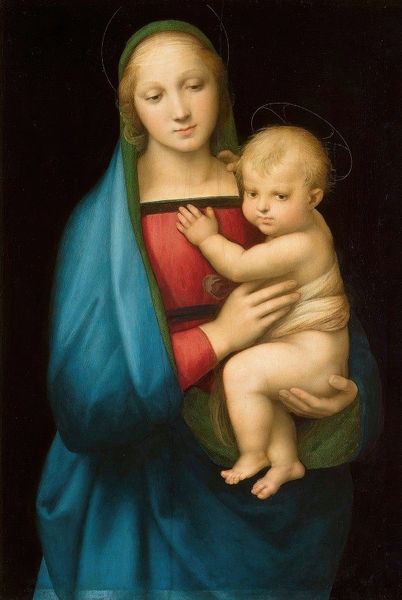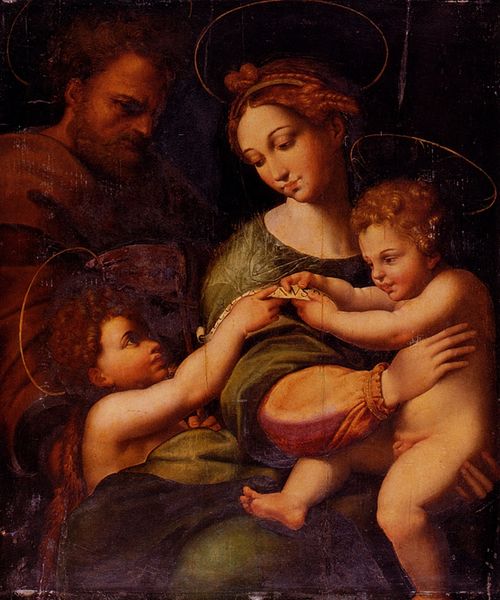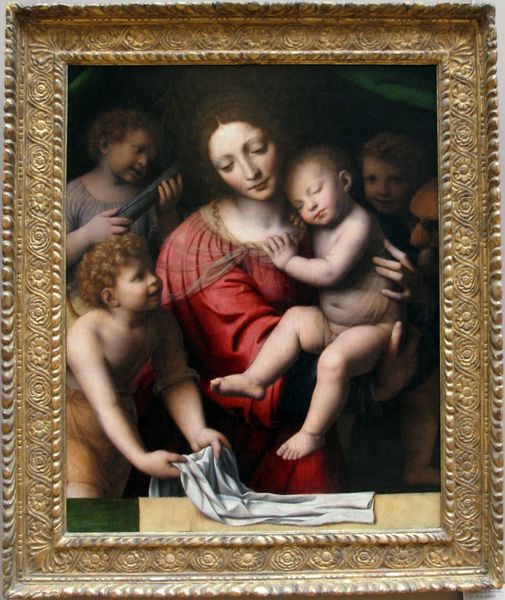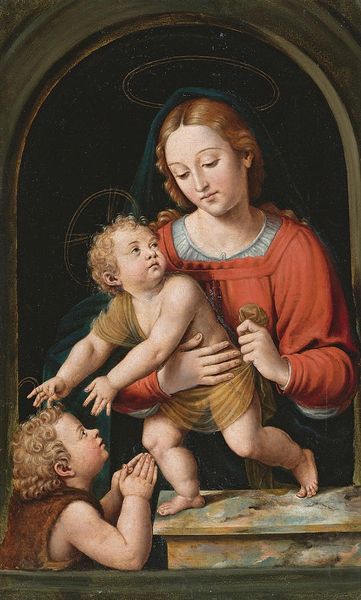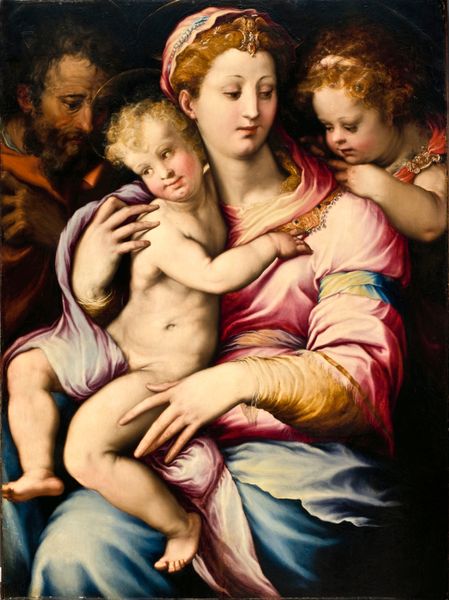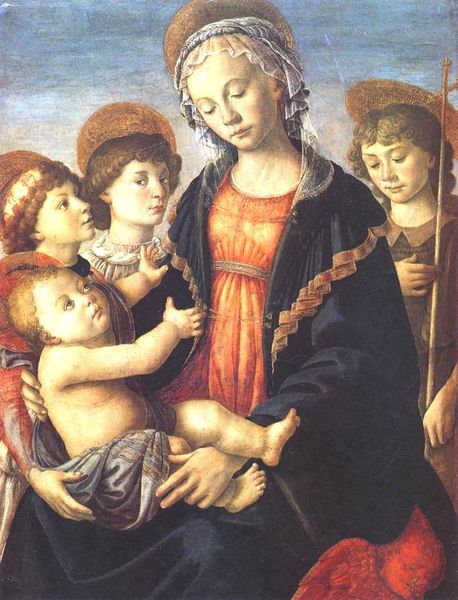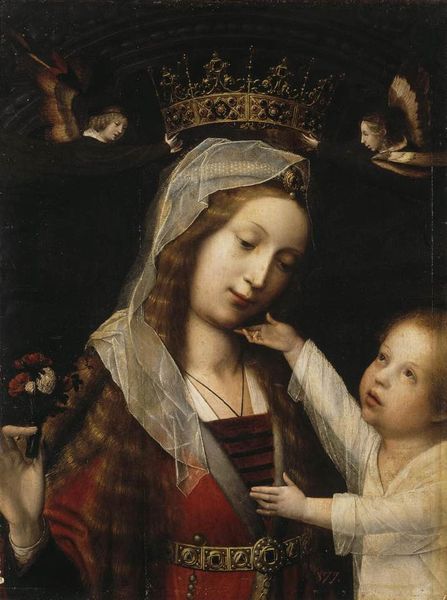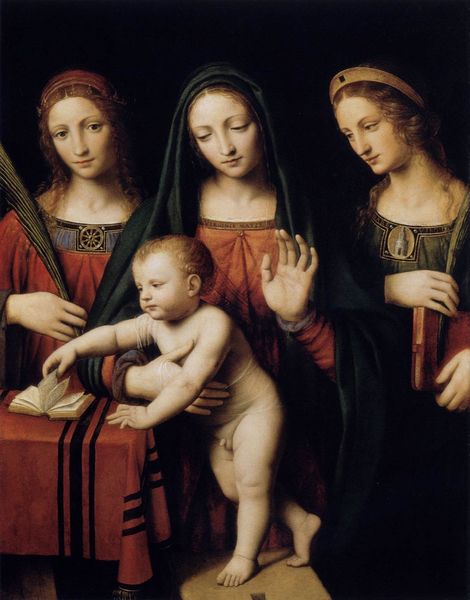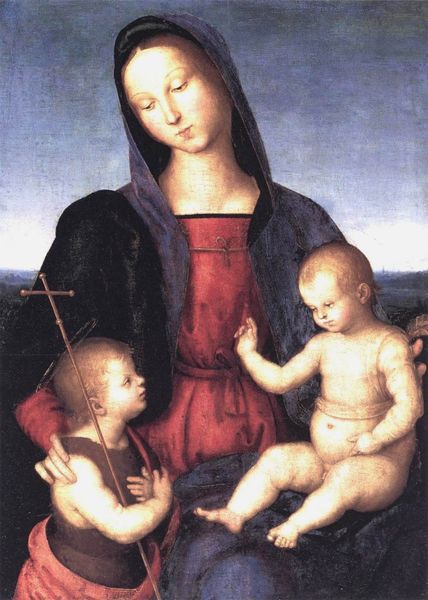
painting, oil-paint
#
portrait
#
high-renaissance
#
allegory
#
portrait
#
painting
#
oil-paint
#
history-painting
#
italian-renaissance
#
angel
Dimensions: 68 x 59 cm
Copyright: Public domain
Curator: Bernardino Luini painted "Saint Catherine" around 1527. It resides here in the Hermitage Museum. Editor: It strikes me as an exceptionally somber piece for the High Renaissance. The muted colors, the introspective gaze—there’s an undeniable stillness. Curator: Luini, deeply influenced by Leonardo da Vinci, infuses this work with a serene spirituality. Note how Saint Catherine, an allegorical figure representing wisdom, is framed within a history that reveres knowledge. Editor: Look at the craftsmanship of that book! You can almost feel the texture of the leather binding, see the individual stitches. I wonder who would have produced this sort of luxury item. The material construction and book-making were highly skilled. Curator: Indeed. Her story, from noble origins to intellectual debates to martyrdom, resonated within a societal context hungry for both religious and philosophical justification of power. The angel presences indicate her spiritual endorsement. Editor: The materiality suggests wealth and class, yet it's at odds with the concept of sacrifice and martyrdom implied in her history. How were images like this consumed by the upper classes and then propagated more broadly as icons of feminine devotion? Curator: Her appeal to diverse patrons undoubtedly hinged on her ability to bridge earthly concerns with spiritual aspirations, showcasing power's endorsement of higher intellectual pursuits. Luini here is reflecting an interesting convergence between the spiritual authority and socio-political dominance. Editor: These artistic achievements often conceal complex systems of production and patronage. The oil paint, the skilled hand...who are all the unacknowledged participants, from the mills grinding the pigment to the patron dictating composition? Curator: Understanding patronage unlocks a wealth of insights. These works played significant roles in defining and broadcasting social messages in the broader Renaissance context. Editor: Agreed. Analyzing its production illuminates art's function within social hierarchies, not merely as aesthetic expression but also as a tool. Curator: Seeing beyond the aesthetic beauty, understanding how power manifests in art, provides an appreciation of cultural legacies that continues to evolve. Editor: Exactly. It is these elements, the production, that enable a deeper investigation and appreciation for a wider conversation around Renaissance artistry.
Comments
No comments
Be the first to comment and join the conversation on the ultimate creative platform.
